Many card game enthusiasts struggle to find an engaging and challenging game that tests their strategic thinking and skill. The limited availability of quality online versions adds to the frustration. Hearts card game players often encounter difficulties in understanding the rules, devising effective strategies, and finding reliable platforms to enjoy the game.
Imagine spending hours searching for a captivating online Hearts card game only to be disappointed by subpar gameplay and lackluster features. Furthermore, the complexity of the game rules can be overwhelming for newcomers, leading to confusion and frustration. Without proper guidance and resources, players may struggle to improve their gameplay and miss out on the joy of competing in Hearts tournaments.
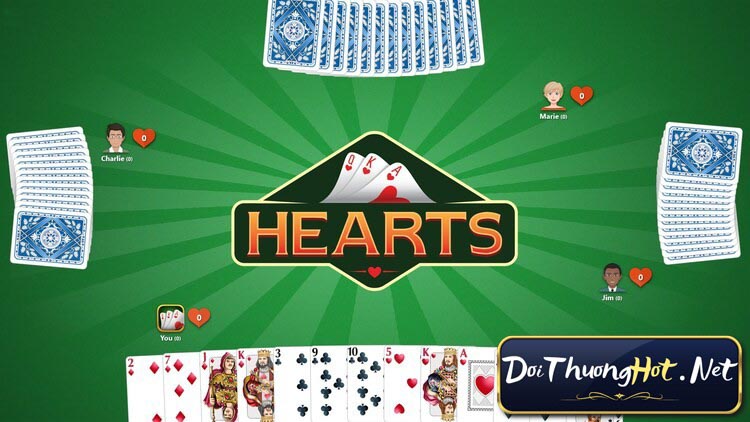
In this comprehensive assessment, we dive deep into the realm of Hearts card game. From explaining the rules and strategies to recommending reputable online platforms, we provide a one-stop resource for all your Hearts needs. Whether you’re a novice seeking guidance or a seasoned player looking for a challenging multiplayer experience, our assessment offers valuable insights, expert tips, and reliable recommendations. Get ready to master the game, compete with confidence, and experience the thrill of Hearts like never before.
Link to play Hearts Online
I. Introduction
A. Brief explanation of the Hearts card game
What is Hearts Card Game?
Hearts Card Game is a popular trick-taking game where players aim to avoid collecting penalty points from hearts and the Queen of Spades.
The Hearts Card Game is a trick-taking game played with a standard deck of 52 cards. The objective is to avoid taking certain cards, namely the hearts suit and the Queen of Spades, as they carry penalty points. The game involves four players, each receiving 13 cards. Passing cards strategically adds an element of anticipation and planning. Players must follow suit if possible while aiming to win tricks with high-ranking cards. The player with the fewest penalty points at the end of the game wins.
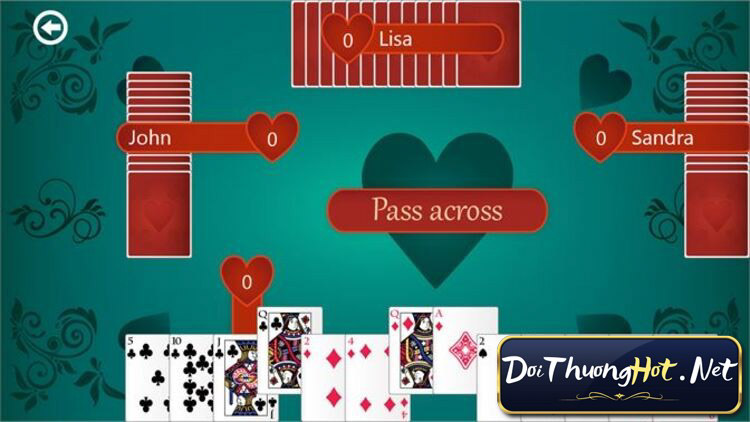
In Hearts, the challenge lies in balancing the desire to win tricks with the need to avoid penalty cards. This strategic balance makes each hand exciting and engaging. The game is often enjoyed casually among friends or played competitively in organized tournaments. Its popularity stems from the mix of skill, strategy, and a touch of luck. Whether you’re a beginner or an experienced player, Hearts offers a delightful card game experience that keeps players coming back for more.
>>> Read more: Bridge Online: The Best Platforms to Play and Connect with Fellow Players
B. Importance and popularity of the game
Importance and Popularity of the Hearts Card Game
- Hearts Card Game holds significant importance in the world of card games, captivating players with its unique blend of strategy, competition, and social interaction.
- Its enduring popularity spans across generations, as players of all ages continue to enjoy the challenges and excitement it offers.
- The game’s simplicity and accessibility make it a favorite choice for casual gaming sessions among friends and family.
- Hearts Card Game serves as a platform for honing critical thinking skills, decision-making abilities, and tactical planning, making it not only entertaining but also intellectually stimulating.
- With numerous online platforms and tournaments dedicated to Hearts, its popularity continues to soar, providing players with opportunities to showcase their skills and compete against opponents from around the world.
- The game’s rich history and presence in literature, movies, and TV shows further contribute to its cultural significance and enduring appeal.
- Whether played in person or online, Hearts Card Game remains a beloved classic that brings people together and fosters memorable experiences.
II. Overview of Hearts Card Game
A. History and origins of the game
The exact origins of the Hearts card game are uncertain, but it is believed to have emerged in the United States during the mid-19th century. Some sources suggest that Hearts may have evolved from earlier European card games like Reversis or Black Lady. However, its precise lineage remains debated among card game historians.

Hearts gained significant popularity in the early 20th century and became a staple in card game collections. The game’s simplicity, combined with its strategic depth, contributed to its enduring appeal. Over time, Hearts has been introduced in various digital formats, reaching a wider audience worldwide.
While the specific inventors and historical milestones are not well-documented, Hearts has become a classic card game enjoyed by players of all ages. Its intuitive rules and the psychological tension it creates make it a captivating pastime. Today, Hearts continues to be played both socially and competitively, serving as a testament to its enduring legacy in the world of card games.
B. Basic rules and objective of the game
The basic rules and objective of the Hearts card game are straightforward, yet strategically challenging. The game is played with a standard deck of 52 cards, and the primary goal is to avoid collecting penalty points. The objective is to have the fewest penalty points at the end of the game. Here are the key rules to understand:
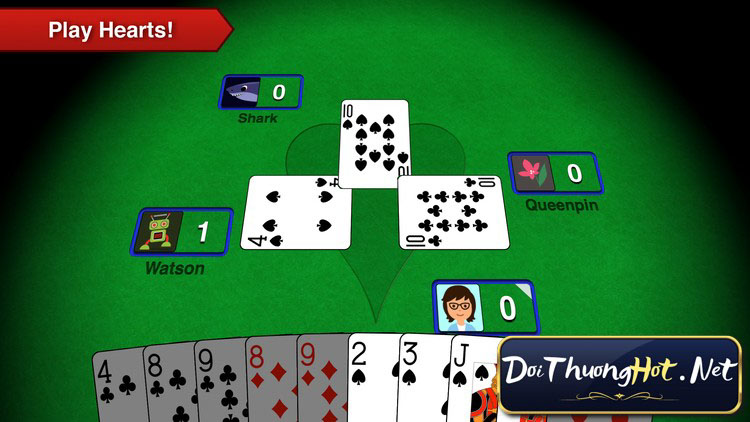
- Card Rankings: All cards have point values, with hearts and the Queen of Spades carrying penalty points. The heart suit cards are worth one point each, while the Queen of Spades carries 13 points.
- Dealing: Each player receives 13 cards, and the dealer can decide whether to pass three cards or not, depending on the game variation.
- Trick-Taking: The game progresses in rounds called tricks. Players must follow suit if possible, and the highest-ranking card of the led suit wins the trick. However, players cannot lead with hearts or the Queen of Spades until they have been broken in a previous trick.
- Scoring: At the end of each round, penalty points are tallied. The player who wins a trick with a heart or the Queen of Spades collects those points. The game continues until one player reaches or exceeds a predetermined score limit, usually 100 points.
- Winning: The player with the lowest total score at the end of the game is declared the winner.
Understanding these basic rules and keeping track of the cards played are crucial for developing effective strategies and successfully avoiding penalty points in the Hearts card game.
C. Card rankings and penalty points
In the Hearts card game, card rankings and penalty points play a crucial role in determining the outcome of each hand. Here are the key points to understand:
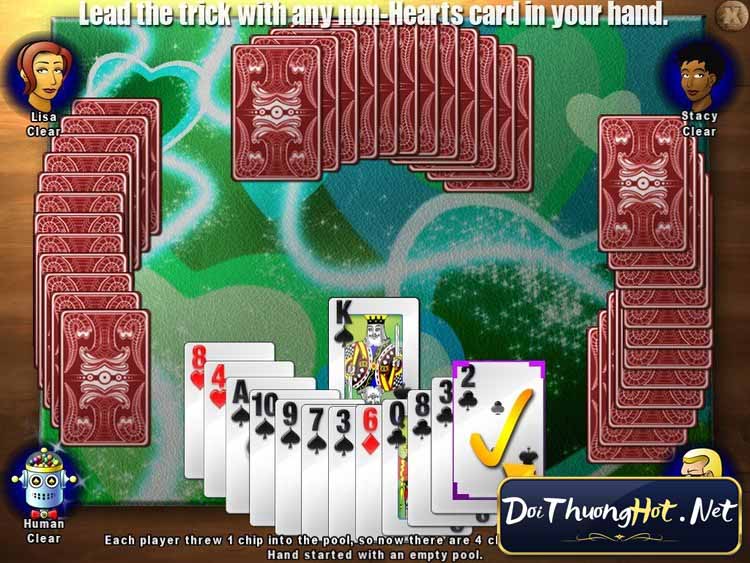
- Hearts Suit: Cards from the heart suit (hearts) carry penalty points. Each heart card is worth one penalty point. The more hearts a player collects, the higher their total penalty points will be.
- Queen of Spades: The Queen of Spades is another card that carries a significant penalty. It is worth 13 penalty points, making it the most valuable card in the game.
- Point Calculation: At the end of each hand, players count the number of penalty points they have acquired. The player who has collected the most penalty points receives a score increase, while the objective is to keep your penalty points as low as possible.
- Strategy: Because penalty points are undesirable, players often try to offload their hearts and the Queen of Spades to opponents during tricks. However, this requires careful planning and observation of other players’ moves.
- Breaking Hearts: In the early stages of the game, players are not allowed to lead with hearts unless the hearts suit has been “broken” by someone playing a heart card in a previous trick.
- Winning Strategy: A winning strategy in Hearts involves balancing the need to avoid penalty cards while strategically winning tricks with low-ranking cards to pass penalty points to opponents.
Understanding the card rankings and penalty points is essential for effectively managing your hand and developing a winning strategy in the Hearts card game. By keeping track of the penalty cards and playing strategically, players can aim to minimize their penalty points and increase their chances of victory.
III. How to Play Hearts Card Game
A. Setting up the game
Setting up the Hearts card game is a crucial step to ensure a smooth and enjoyable gameplay experience. Here are the key points to consider:
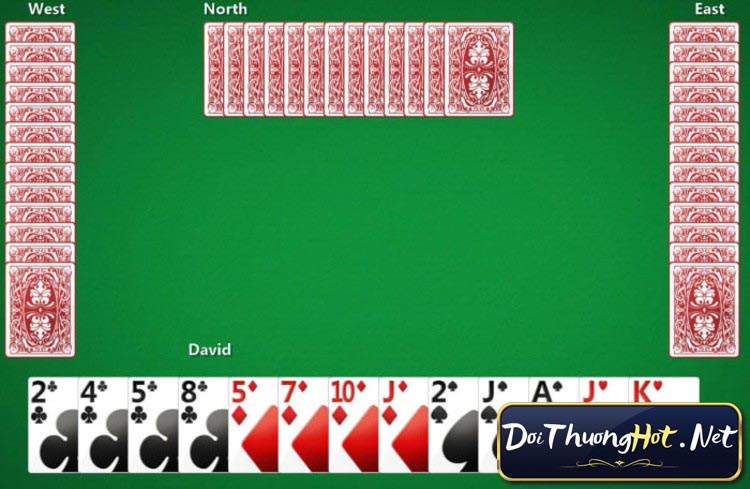
- Number of Players: Hearts is typically played with four players, although it can be adapted for three or six players by removing specific cards from the deck.
- Shuffling and Dealing: Begin by shuffling a standard 52-card deck thoroughly. The dealer distributes the cards one at a time in a clockwise manner, starting from the player to their left, until each player has 13 cards.
- Passing Cards: Before the first trick begins, players must pass three cards face-down to an opponent, determined by the predetermined passing direction (often left for the first hand, then alternating directions for subsequent hands).
- Selecting the First Trick: To determine who plays the first trick, players typically choose a low-ranking card from their hand, and the player with the lowest card becomes the lead for the first trick.
- Card Etiquette: It’s important to establish and follow specific card etiquette rules, such as no table talk or revealing card information during the passing phase or playing out of turn during tricks.
- Scoring Method: Decide on a scoring method, such as reaching a certain point limit (e.g., 100 points), or playing a set number of hands, with the player with the lowest total score at the end declared the winner.
By following these guidelines for setting up the Hearts card game, players can establish a fair and organized game structure, allowing them to fully immerse themselves in the strategic gameplay that awaits.
B. Dealing and passing cards
Dealing and passing cards are essential aspects of setting up and strategizing in the Hearts card game. Here are the key points to understand:
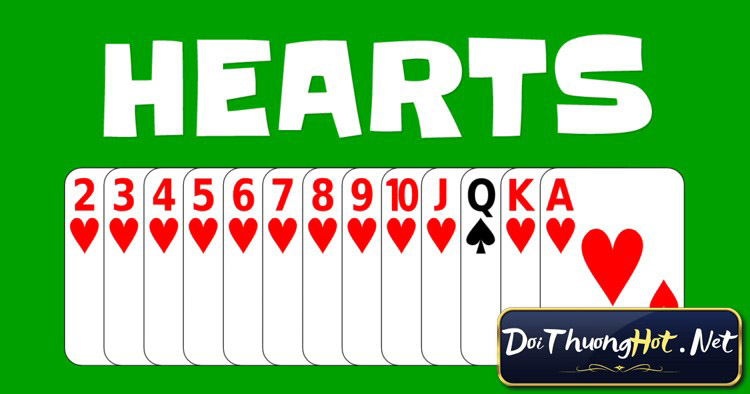
- Dealing: Start by shuffling a standard 52-card deck thoroughly. The dealer distributes the cards one at a time in a clockwise direction, ensuring that each player receives 13 cards. This process continues until all players have their hands.
- Passing Direction: Before the first trick, players must pass three cards face-down to an opponent. The passing direction is predetermined, often starting with the player to the left of the dealer, then alternating directions in subsequent hands.
- Passing Restrictions: In the standard Hearts game, players cannot pass penalty cards (hearts or the Queen of Spades) during the first round. However, in some variations, players may have the option to pass penalty cards in the initial round.
- Passing Strategies: Choosing which cards to pass can significantly impact gameplay. Players must strategize and consider their own hand strength, opponents’ tendencies, and the passing direction to minimize penalty points or strategically pass high-scoring cards.
- Variations: Different Hearts variations may alter the passing rules. Some variations allow players to pass cards both to the left and right in subsequent hands, introducing additional tactical considerations.
- Adapting Strategies: As the game progresses, players adapt their strategies based on the cards received during the passing phase, opponents’ actions, and the evolving gameplay dynamics.
Understanding the process of dealing and passing cards in Hearts is crucial for setting the stage for strategic play. Careful consideration of the cards to pass and adapting one’s strategy based on the evolving game situation can enhance players’ chances of success and minimize the accumulation of penalty points.
C. Playing and winning tricks
Playing and winning tricks is a central aspect of the Hearts card game, requiring both strategic planning and skillful execution. Here are the key points to understand:
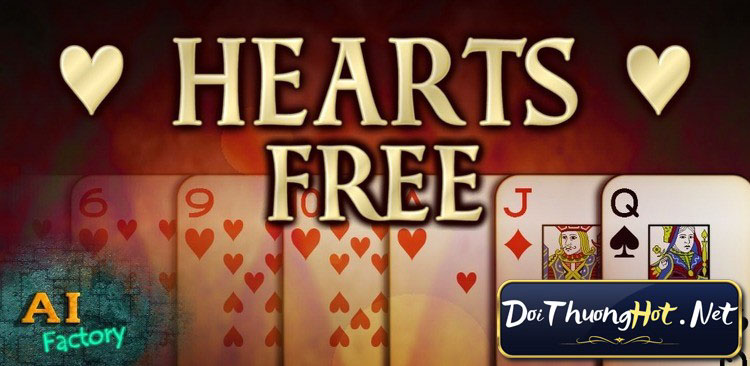
- Leading the Trick: The player who leads the trick plays the first card, determining the suit for that particular trick.
- Following Suit: In subsequent turns, players must follow suit if they have a card of the led suit. If they don’t have a card of the led suit, they can play any card from their hand.
- Winning the Trick: The highest-ranking card of the led suit wins the trick. If any cards from the hearts suit or the Queen of Spades are played, the highest-ranking card from these penalty suits wins the trick.
- Avoiding Penalty Cards: Since collecting penalty cards is undesirable, players often try to avoid winning tricks that contain hearts or the Queen of Spades.
- Strategic Card Play: Players strategically choose their cards to maximize their chances of winning desirable tricks or passing penalty cards to opponents.
- Breaking Hearts: In the early stages of the game, players cannot lead with hearts unless the hearts suit has been “broken” by someone playing a heart card in a previous trick.
- Winning Strategy: A winning strategy involves carefully tracking the cards played, observing opponents’ tendencies, and strategically timing the play of penalty cards to minimize their impact on one’s own score.
Mastering the art of playing and winning tricks in Hearts requires a combination of strategic decision-making, card counting skills, and understanding opponents’ gameplay patterns. By employing sound tactics and adapting to the evolving game situation, players can increase their chances of success and minimize the accumulation of penalty points.
>>> Tips: 7 Strategies for Winning at Solitaire: Master the Art of the Solo Game
D. Scoring and determining the winner
Scoring and determining the winner in the Hearts card game is based on the accumulation of penalty points throughout the gameplay. Here are the key points to understand:
- Penalty Points: Penalty points are earned by winning tricks that contain hearts or the Queen of Spades. Each heart card carries one penalty point, while the Queen of Spades is worth 13 penalty points.
- Scoring Calculation: At the end of each hand, players count the total number of penalty points they have acquired. These points are added to their overall score.
- Goal of the Game: The objective is to have the lowest score at the end of the game. The game typically continues until one player reaches or exceeds a predetermined score limit, often 100 points.
- Winning Condition: The player with the lowest total score at the end of the game is declared the winner.
- Strategic Considerations: Players need to balance winning tricks with avoiding penalty cards. Skillful play involves timing the capture of penalty cards to minimize their impact on one’s score and passing them strategically during the passing phase.
- Variations: Different variations of Hearts may have unique scoring rules, such as assigning penalty points to certain cards or introducing additional scoring elements.
- Tiebreakers: In the event of a tie, various tiebreaker rules can be applied, including the player with the fewest penalty cards or the player who won the last hand.
Understanding the scoring system and determining the winner in Hearts allows players to strategize effectively and make decisions that minimize penalty points while aiming for victory. By carefully managing their gameplay and tracking their scores, players can develop winning strategies and strive for the lowest total score to emerge as the champion of the game.
IV. Variations and Adaptations of Hearts Card Game
A. Different versions of the game (e.g., Dirty Hearts, 2-player rules)
Different versions of the Hearts card game offer exciting variations and unique gameplay experiences. Here are some noteworthy versions to explore:
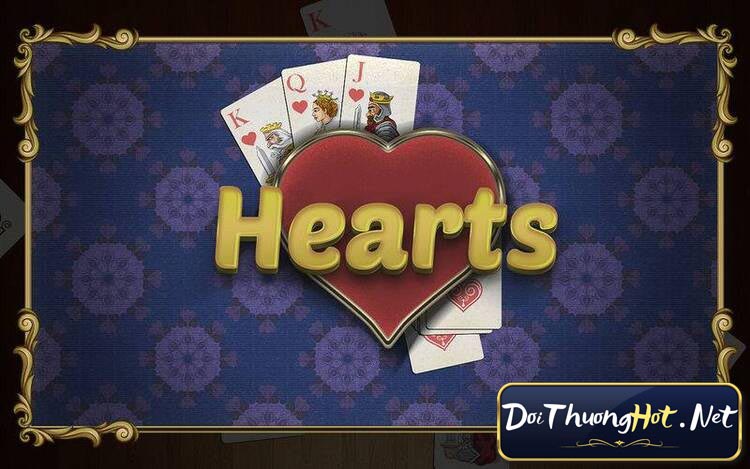
- Dirty Hearts: In Dirty Hearts, players aim to collect penalty cards rather than avoiding them. The player with the most penalty points at the end of the game wins, adding a thrilling twist to traditional Hearts gameplay.
- 2-Player Rules: While Hearts is commonly played with four players, variations exist for two players. In the 2-player version, players compete against each other to collect the fewest penalty points.
- Three-Handed Hearts: Three-Handed Hearts adapts the game for three players. To accommodate the odd number of players, certain cards are removed from the deck, altering the gameplay dynamics and strategic considerations.
- Passing Directions: The passing direction during the passing phase can vary in different versions of Hearts. Some versions allow passing to the left, while others introduce alternate passing directions, adding additional complexity and decision-making.
- Custom Rule Variations: Hearts is a flexible game that allows players to introduce custom rules or variations to suit their preferences. This flexibility enables players to personalize the gameplay experience and add unique twists.
Exploring different versions of the Hearts card game brings diversity and fresh challenges to the table. Whether it’s embracing new rules like Dirty Hearts or adapting the game for fewer players, these variations offer exciting opportunities to rediscover the timeless enjoyment of Hearts with unique twists and strategic nuances.
B. Kingdom Hearts card game and its unique features
The Kingdom Hearts card game stands out as a unique adaptation of the popular video game franchise into a card-based gameplay experience. Here are the key features that make it special:
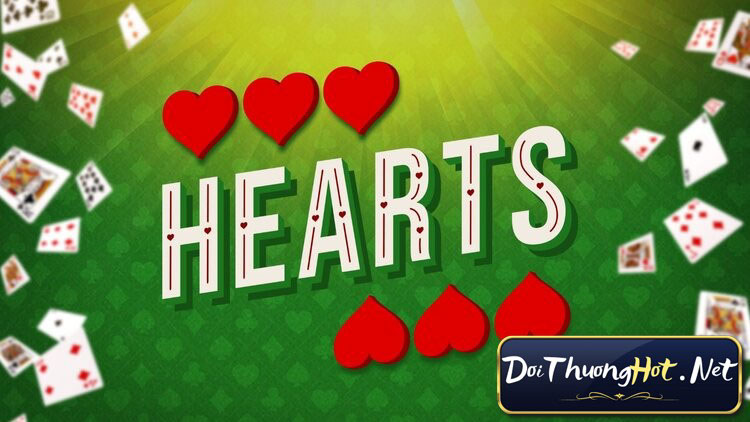
- Integration of Characters and Worlds: The Kingdom Hearts card game incorporates beloved characters, worlds, and elements from the Kingdom Hearts universe. Players can interact with iconic characters like Sora, Donald Duck, and Goofy while exploring familiar locations from the game series.
- Strategic Deck Building: Building a powerful deck is crucial in the Kingdom Hearts card game. Players strategically choose cards representing spells, abilities, and characters to create synergistic combinations and enhance their chances of success.
- Dynamic Card Battle System: The gameplay revolves around engaging card battles, where players use their decks to execute attacks, perform special moves, and defend against opponents’ actions. Each card has its own unique effects, further adding depth and strategy to the battles.
- Story-driven Campaign: The Kingdom Hearts card game often includes a story-driven campaign, allowing players to immerse themselves in captivating narratives that expand upon the Kingdom Hearts lore.
- Collectible Card Elements: Similar to traditional trading card games, the Kingdom Hearts card game often features collectible elements, encouraging players to acquire rare and powerful cards to strengthen their decks and compete against other players.
- Multiplayer Options: Some versions of the Kingdom Hearts card game offer multiplayer modes, enabling players to challenge their friends or engage in online battles against opponents from around the world.
The Kingdom Hearts card game provides a captivating card-based experience that brings the beloved Kingdom Hearts franchise to a new dimension. With its integration of characters, strategic deck building, dynamic battles, and captivating narratives, this unique card game offers an immersive and thrilling gameplay experience for fans of the Kingdom Hearts series and card game enthusiasts alike.
V. Online Hearts Card Game
A. Introduction to online versions of Hearts
Online versions of Hearts have revolutionized the way the game is played, offering convenient access and exciting features. These digital adaptations bring the beloved card game to a global audience, allowing players to connect and compete with opponents from around the world.
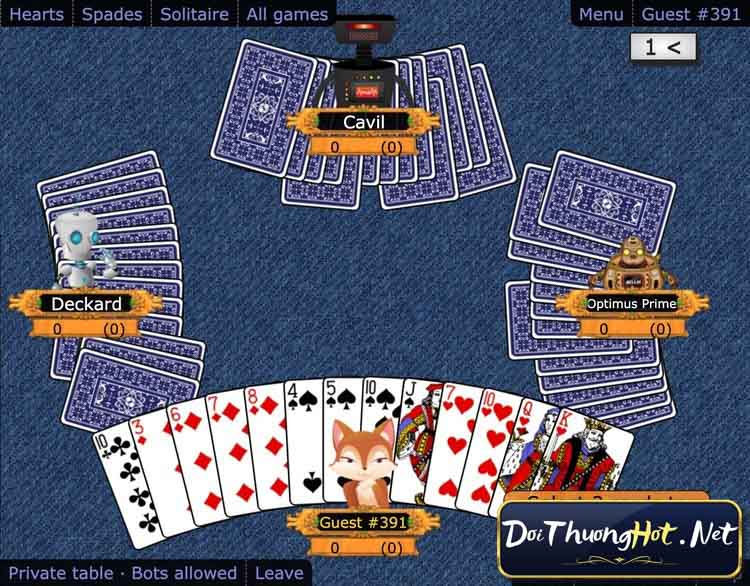
Online Hearts platforms provide a user-friendly interface that replicates the traditional gameplay experience. Players can enjoy the game in real-time, participating in multiplayer matches or practicing against computer opponents. The online format also offers additional features like chat functions, leaderboards, and customizable game settings.
One of the advantages of playing Hearts online is the availability of different variations and rule sets, catering to individual preferences. Whether you prefer classic Hearts, Dirty Hearts, or even specialized versions like 2-player Hearts, there is a wide range of options to choose from.
Moreover, online Hearts eliminates the need for physical cards and simplifies the setup process, making it accessible to players anytime, anywhere. With vibrant graphics and immersive gameplay, online Hearts provides an engaging and social environment for enthusiasts to enjoy this beloved card game in a digital realm.
B. Benefits and advantages of playing Hearts online
Playing Hearts online offers numerous benefits and advantages that enhance the overall gaming experience. Here are the key points to consider:
- Convenience and Accessibility: Online Hearts allows players to enjoy the game anytime, anywhere, eliminating the need for physical cards or gathering in person. It can be played on various devices, including computers, tablets, and smartphones.
- Global Player Community: Online platforms connect players from around the world, creating a vibrant and diverse player community. It offers opportunities to compete against skilled opponents, learn new strategies, and make friends who share a common interest in the game.
- Variety of Game Modes: Online Hearts platforms often offer a range of game modes, including single-player against computer-controlled opponents, multiplayer with friends, or even competitive tournaments. Players can choose their preferred mode and adjust the gameplay experience to their liking.
- Accessible Tutorials and Guides: Online platforms typically provide helpful tutorials and guides for new players to learn the rules and strategies of Hearts. This accessibility enables beginners to grasp the game quickly and improve their skills over time.
- Improved User Experience: Online Hearts platforms often feature sleek interfaces, customizable settings, and additional features like statistics tracking and in-game chat. These enhancements contribute to a smooth and enjoyable user experience, enhancing the overall gameplay.
- Practice and Skill Development: Online Hearts allows players to practice and refine their skills against computer opponents or other players. This continuous practice helps players develop strategies, improve decision-making, and enhance their overall gameplay proficiency.
Playing Hearts online brings convenience, a global player community, diverse game modes, accessible resources, and opportunities for skill development. These advantages contribute to a rewarding and enjoyable Hearts experience, making online play a popular choice for both casual and competitive players.
C. Popular platforms and websites for playing Hearts online
Popular platforms and websites for playing Hearts online provide players with engaging and accessible environments to enjoy the game. Here are some noteworthy options:
- 247 Hearts: 247 Hearts is a well-known online platform that offers a variety of Hearts game modes, including Classic Hearts, Dirty Hearts, and more. It provides a user-friendly interface and allows players to compete against computer-controlled opponents.
- Trickster Cards: Trickster Cards is a versatile online gaming platform that features Hearts among its wide range of card games. It offers multiplayer options, customizable game rules, and cross-platform compatibility, allowing players to enjoy Hearts on different devices.
- VIP Hearts: VIP Hearts is a dedicated online platform that focuses on providing a high-quality Hearts experience. It offers multiplayer gameplay, customizable game settings, and a ranking system, allowing players to compete against opponents of varying skill levels.
- CardGames.io: CardGames.io is a popular website that offers a collection of card games, including Hearts. It provides a simple and intuitive interface, multiplayer functionality, and the option to play against computer opponents.
- Games.com: Games.com is a well-established gaming website that features a variety of online games, including Hearts. It offers multiplayer gameplay, chat functionality, and different game variations to cater to various player preferences.
These popular platforms and websites offer convenient access to online Hearts gameplay, featuring diverse game modes, multiplayer options, and user-friendly interfaces. Whether playing against computer opponents or challenging friends and players from around the world, these platforms provide enjoyable experiences for Hearts enthusiasts of all skill levels.
VI. Strategies and Tips for Hearts Card Game
A. Basic strategies for winning the game
Basic strategies for winning the Hearts card game can greatly enhance a player’s chances of success. Here are some key strategies to consider:
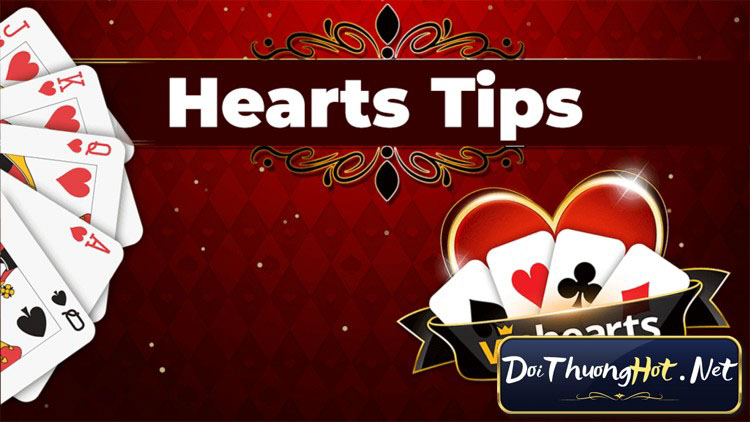
- Avoiding Penalty Cards: Since penalty cards (hearts and the Queen of Spades) contribute to a player’s score, it’s generally advantageous to avoid winning these cards in tricks. Strategically playing low-ranking cards when others have played penalty cards can help minimize their impact on your score.
- Leading with Low Cards: Leading with low cards can force opponents to play higher cards, potentially allowing you to safely play penalty cards later in the round. This strategy helps control the flow of the game and gives you more control over the outcome of tricks.
- Tracking Cards Played: Keeping track of the cards played by each player is essential. By observing which penalty cards have been played and which remain in play, you can make more informed decisions about which cards to play and when.
- Counting Points: Actively counting penalty points can help you gauge your position in the game and adjust your strategy accordingly. Knowing how many points each opponent has acquired can influence your card choices and potential risks.
- Passing Strategy: During the passing phase, consider passing low cards to opponents who are likely to win tricks, thereby burdening them with penalty points. Conversely, passing high cards to opponents who have already acquired penalty cards can limit their ability to unload additional points on you.
- Taking Risks: Assess the game situation and consider taking calculated risks when necessary. Sometimes, winning a particular trick with a penalty card may be advantageous if it allows you to gain control or offload unwanted cards in subsequent tricks.
By employing these basic strategies, players can improve their decision-making, increase their chances of avoiding penalty cards, and ultimately enhance their prospects of winning the Hearts card game. With practice and experience, players can refine their strategies and adapt them to different game situations for optimal gameplay outcomes.
B. Advanced tactics and techniques
Advanced tactics and techniques can take your Hearts card game skills to the next level, providing a competitive edge against skilled opponents. Here are some key tactics to consider:
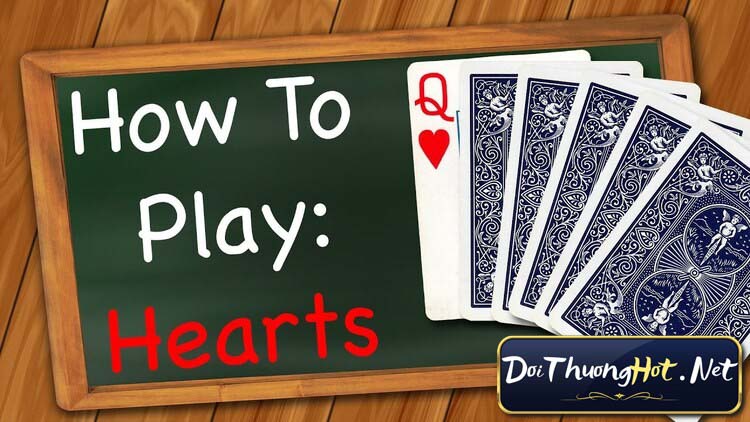
- Card Counting: Advanced players often employ card counting techniques to gain insights into the remaining cards in play. By tracking the cards played and using deductive reasoning, you can make more accurate predictions about which cards are still in opponents’ hands.
- Moon Shooting: “Moon shooting” refers to deliberately collecting all the penalty cards (hearts and the Queen of Spades) in a single round. This strategy can be risky but can also be a powerful move to disrupt opponents’ plans and accrue substantial penalty points.
- Bluffing and Trapping: Skilled players sometimes use bluffing and trapping tactics to deceive opponents. This involves strategically playing low-ranking cards to lure opponents into thinking it’s safe to play higher cards, only to surprise them with a penalty card later.
- Reading Opponents’ Play Styles: Observing and analyzing opponents’ play styles can provide valuable insights. Pay attention to their tendencies, patterns, and reactions to determine their strategies, allowing you to adjust your own gameplay accordingly.
- Timing and Timing Delays: Timing is crucial in Hearts. Delaying the play of high-ranking cards until the opportune moment can maximize their impact while minimizing the risk of winning penalty cards. Skilled players often employ timing delays to their advantage.
- Teamwork (in Team-based Hearts): In team-based Hearts, effective communication and coordination with your partner are vital. Strategize with your partner, share information, and use teamwork to strategically pass cards and coordinate plays.
By incorporating these advanced tactics and techniques into your gameplay, you can elevate your skills, outwit opponents, and increase your chances of success in the Hearts card game. Remember, practice and experience are key to mastering these advanced strategies and adapting them to different game scenarios.
C. Common mistakes to avoid
Avoiding common mistakes is essential for improving your performance in the Hearts card game. By being aware of these pitfalls, you can refine your strategy and increase your chances of success. Here are some common mistakes to avoid:
- Taking unnecessary risks: Playing penalty cards without a clear advantage or taking unnecessary risks can lead to accumulating penalty points. Assess the game situation carefully and make strategic decisions based on the current state of the game.
- Ignoring card tracking: Failing to track the cards played by opponents can hinder your decision-making. Keep a close eye on the cards played and adjust your strategy accordingly.
- Passing high-value cards: Passing high-value cards, such as penalty cards or high-ranking cards, to opponents can backfire and result in higher penalty points. Consider passing these cards strategically to minimize their impact on your score.
- Misjudging the passing phase: The passing phase is a crucial opportunity to improve your hand. Analyze the cards you receive and the cards you pass to opponents, considering their potential impact on your gameplay.
- Losing focus on opponents’ scores: Ignoring the scores of your opponents can lead to misjudgments and missed opportunities. Keep track of their penalty points to assess their positions and adjust your strategy accordingly.
- Failing to adapt to changing circumstances: A rigid gameplay approach without adapting to changing circumstances can limit your success. Be flexible, assess the evolving game situation, and adjust your strategy accordingly.
By avoiding these common mistakes, you can improve your decision-making, minimize penalty points, and increase your chances of winning in the Hearts card game. Keep practicing, learn from your mistakes, and refine your gameplay to achieve better results.
VII. Hearts Card Game Tournaments
A. Overview of Hearts tournaments
Hearts tournaments are organized events that bring together skilled players to compete in this captivating card game. These tournaments provide a platform for enthusiasts to showcase their strategic prowess and vie for prestigious titles.
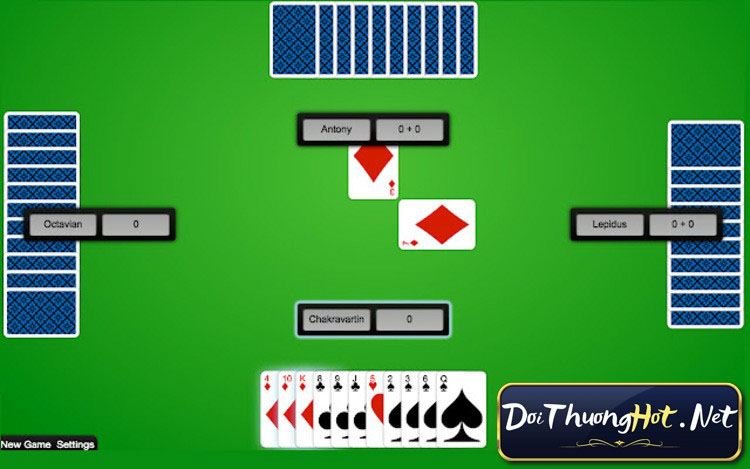
In a Hearts tournament, participants face off against each other in a series of matches, typically following a round-robin or elimination format. The objective is to accumulate the fewest penalty points over multiple hands, showcasing consistent skill and decision-making throughout the competition.
Tournaments often implement specific rules and scoring systems, ensuring a fair and standardized playing field. They may also incorporate additional challenges, such as time limits or limited passing options, to add an extra layer of complexity and excitement to the game.
Hearts tournaments attract dedicated players who are passionate about the game and strive to reach the pinnacle of competitive play. These events foster a sense of camaraderie among participants and provide opportunities for players to learn from each other and improve their skills. For those seeking a thrilling and high-stakes Hearts experience, tournaments offer an ideal platform to test their mettle against formidable opponents and make their mark in the Hearts community.
B. Format, rules, and scoring in tournaments
The format, rules, and scoring in Hearts tournaments provide a structured and competitive environment for players to showcase their skills. Here are key aspects to understand:
- Format: Hearts tournaments can follow various formats, including single-elimination, round-robin, or Swiss-style tournaments. Each format determines the number of rounds, players, and how winners are determined.
- Rules: Tournaments generally adhere to the standard rules of Hearts with minor variations, such as the number of penalty cards, passing rules, and shooting the moon. It’s essential to familiarize yourself with the specific tournament rules before participating.
- Scoring: Tournaments employ scoring systems to determine winners. Commonly, penalty cards contribute to players’ scores, with higher penalty points indicating a lower ranking. Additional scoring elements may include shooting the moon (awarding negative points) or bonus points for specific achievements.
- Advancement and Elimination: In multi-round tournaments, players accumulate points or rankings throughout each round. Depending on the tournament format, top-scoring players or teams advance to subsequent rounds, while others may be eliminated.
- Final Standings and Prizes: The final standings are determined based on accumulated points or rankings from all rounds. The top-scoring players or teams are awarded prizes or recognized as winners of the tournament.
Participating in Hearts tournaments offers an exciting opportunity to compete against skilled opponents and test your abilities. Understanding the tournament format, rules, scoring, and the path to advancement can help you prepare strategically and make informed decisions during gameplay. Keep in mind that tournament experiences may vary, so be sure to familiarize yourself with the specific details of each tournament you participate in.
C. Prominent Hearts tournaments and competitions
Prominent Hearts tournaments and competitions provide players with a platform to showcase their skills and compete against top-level opponents. Here are some notable tournaments and competitions in the world of Hearts:
- World Series of Hearts: The World Series of Hearts is a prestigious tournament that attracts top Hearts players from around the globe. It features intense competition, high-stakes gameplay, and substantial prize pools, elevating the excitement and level of play.
- Hearts Pro League: The Hearts Pro League is a professional league dedicated to the game of Hearts. It brings together elite players who compete in regular season matches, leading up to playoffs and a championship event. The league offers a competitive platform for players to demonstrate their mastery of the game.
- Online Hearts Championships: Online platforms host regular Hearts championships, allowing players from anywhere in the world to participate. These championships often span multiple rounds and attract a diverse range of skill levels, providing opportunities for players to improve their gameplay and compete for recognition.
- Regional and Local Tournaments: Numerous regional and local Hearts tournaments take place worldwide, catering to players of all skill levels. These tournaments offer a chance for players to compete in a more accessible setting and engage with the Hearts community on a regional scale.
Participating in these prominent Hearts tournaments and competitions not only allows players to measure their skills against the best but also provides a sense of camaraderie within the Hearts community. These events offer valuable experiences, opportunities for growth, and the thrill of competitive gameplay. Whether you aspire to compete at the highest level or simply enjoy the excitement of tournament play, these prominent Hearts tournaments are sure to satisfy your competitive spirit.
VIII. Hearts Card Game in Popular Culture
A. References to Hearts in literature, movies, and TV shows
Hearts, the popular card game, has made appearances in various forms of media, including literature, movies, and TV shows, often reflecting its association with love, strategy, and emotional depth. In literature, Hearts is frequently used as a metaphor for love and romantic entanglements. It symbolizes vulnerability, risk-taking, and the intricate dynamics of relationships. Hearts often find their way into poetry, where they become a powerful symbol of passion and emotional connection.
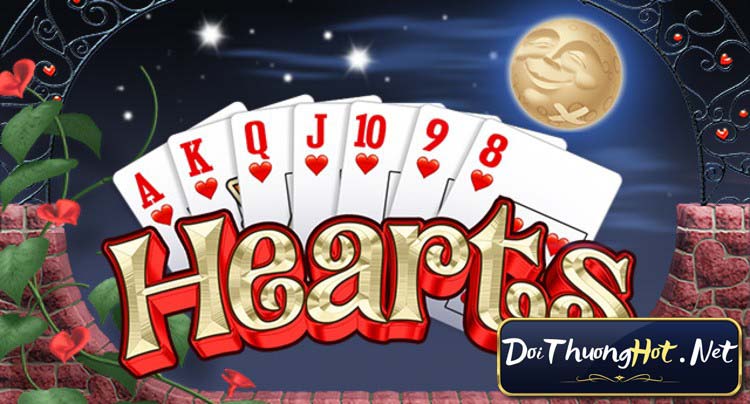
In movies and TV shows, Hearts is portrayed as a game that brings characters together, fosters competition, and reveals their personalities. It is often used to showcase characters’ cunning strategies or as a backdrop for dramatic tension and revelations. Hearts games can serve as a bonding activity for friends, a way to pass the time during a tense moment, or a pivotal plot point that drives the narrative forward.
For instance, Hearts is featured in the classic novel “Alice’s Adventures in Wonderland” by Lewis Carroll, where the Queen of Hearts character embodies authoritarianism and a whimsical take on the game. In the film “The Cincinnati Kid,” Hearts is the centerpiece of high-stakes poker games, illustrating the intensity and psychological warfare involved in the card game.
TV shows like “The Simpsons” and “Friends” have also included episodes centered around Hearts, showcasing the characters’ competitiveness, humor, and camaraderie during their games.
These references to Hearts in literature, movies, and TV shows not only reflect the game’s widespread recognition but also highlight its ability to capture universal themes and emotions. Hearts serves as a symbol that transcends the boundaries of the card table, resonating with audiences through its connections to love, relationships, and the complexities of human nature.
B. Hearts card game in the gaming industry
The Hearts card game has also made its mark in the gaming industry, finding its place in various digital platforms and gaming experiences. Video game adaptations of Hearts offer players the opportunity to enjoy the game in a virtual environment, often providing enhanced visuals, animations, and customizable features.

In computer and mobile games, Hearts is often included as a part of larger card game collections, catering to a wide audience of casual and dedicated players. These games offer different difficulty levels, allowing players to challenge themselves or engage in more relaxed gameplay. Hearts can be played against AI opponents, providing a single-player experience, or against real players in online multiplayer modes, fostering a sense of competition and community.
Furthermore, Hearts card game apps have gained popularity on mobile devices, providing convenient access to the game anytime, anywhere. These apps often offer additional features like tutorials, statistics tracking, and social integration, allowing players to connect with friends or compete with players from around the world.
The gaming industry has also seen the development of virtual reality (VR) adaptations of Hearts, immersing players in an interactive and immersive gaming experience. VR technologies bring the card game to life, creating an engaging and realistic environment where players can virtually interact with the cards and opponents.
Hearts card game competitions have also emerged within the gaming industry, with players participating in organized tournaments and eSports events. These tournaments provide an opportunity for skilled players to showcase their expertise, compete for prizes, and gain recognition within the gaming community.
Overall, the presence of Hearts in the gaming industry showcases the enduring appeal of the game and its ability to adapt to various gaming platforms, providing engaging and enjoyable experiences for players of all levels.
FAQs
How many players are required to play Hearts?
Hearts is typically played with four players. However, it is also possible to play with three or six players by adjusting the rules slightly.
What is the goal of Hearts?
The objective of Hearts is to avoid collecting penalty cards, namely hearts and the Queen of Spades. The player with the fewest penalty points at the end of the game is the winner.
Can you shoot the moon in Hearts?
Yes, shooting the moon is a strategy in Hearts where a player aims to collect all the penalty cards (hearts and the Queen of Spades) in a single round. If successful, the player receives no penalty points, while all other players receive 26 penalty points each.
What are the passing rules in Hearts?
Before each round, players pass a set number of cards to their opponents. In a standard game with four players, three cards are passed to the left in the first round, then to the right in the second, across in the third, and no cards are passed in the fourth round.
Are there variations of the Hearts card game?
Yes, there are variations of the Hearts card game. Some popular variations include Dirty Hearts, where additional penalty cards are added, and 2-player Hearts, which follows a modified set of rules specifically designed for two players.
IX. Conclusion
| Advantage | Explanation |
|---|---|
| 1. Strategic Gameplay | Hearts requires players to make strategic decisions, such as when to play penalty cards and when to try shooting the moon, adding depth and complexity to the game. |
| 2. Social Interaction | Playing Hearts provides an opportunity for social interaction, whether it’s with friends and family around a table or through online multiplayer options. |
| 3. Easy to Learn | Hearts has simple rules that are easy to learn, making it accessible to players of various ages and skill levels. |
| 4. Varied Strategies | The game offers a range of strategies to employ, allowing players to adapt and develop their own style of play. |
| 5. Exciting Competition | Hearts can be highly competitive, creating thrilling moments as players strive to collect the fewest penalty points and outsmart their opponents. |
| Disadvantage | Explanation |
|---|---|
| 1. Luck of the Draw | As with many card games, the luck of the draw can influence the outcome of a round or game in Hearts, which may frustrate some players. |
| 2. Vulnerability to Tricks | Hearts gameplay involves players attempting to win or avoid certain tricks, making it possible to fall victim to skilled opponents’ strategies. |
| 3. Lack of Control | In some situations, players may feel a lack of control over the game’s outcome, especially when receiving unfavorable cards during the passing phase. |
These tables highlight the advantages and disadvantages of playing the Hearts card game. While the game offers strategic gameplay, social interaction, and various strategies to explore, it also involves elements of luck, vulnerability to opponent’s tricks, and occasional lack of control. Players should consider these aspects when deciding to play Hearts and adapt their approach to maximize enjoyment.
A. Recap of key points discussed
In summary, the Hearts card game is a popular trick-taking game where players aim to avoid penalty cards, such as hearts and the Queen of Spades. It has a rich history with uncertain origins but gained significant popularity in the 20th century.
Online versions of Hearts have brought the game to a global audience, offering convenient access, various rule sets, and engaging features. Hearts tournaments provide a platform for competitive play and allow players to showcase their skills and strategic thinking.
The game has also found its way into literature, movies, and TV shows, often symbolizing love, relationships, and emotional depth. In the gaming industry, Hearts has been adapted into video games, mobile apps, and even virtual reality experiences, catering to a diverse range of players and offering immersive gameplay.
B. Final thoughts on the Hearts card game
In conclusion, Hearts Card Game offers a captivating and strategic experience that appeals to both casual players and seasoned card game enthusiasts. With its easy-to-learn rules, players can quickly immerse themselves in the gameplay and begin devising winning strategies.
The competitive nature of the game, coupled with the social interaction it fosters, creates an engaging and entertaining environment. However, players should be mindful of the element of luck that can influence outcomes and the potential vulnerability to opponent’s tactics.
Overall, Hearts Card Game provides an enjoyable and intellectually stimulating experience that keeps players coming back for more, making it a timeless classic in the world of card games.















